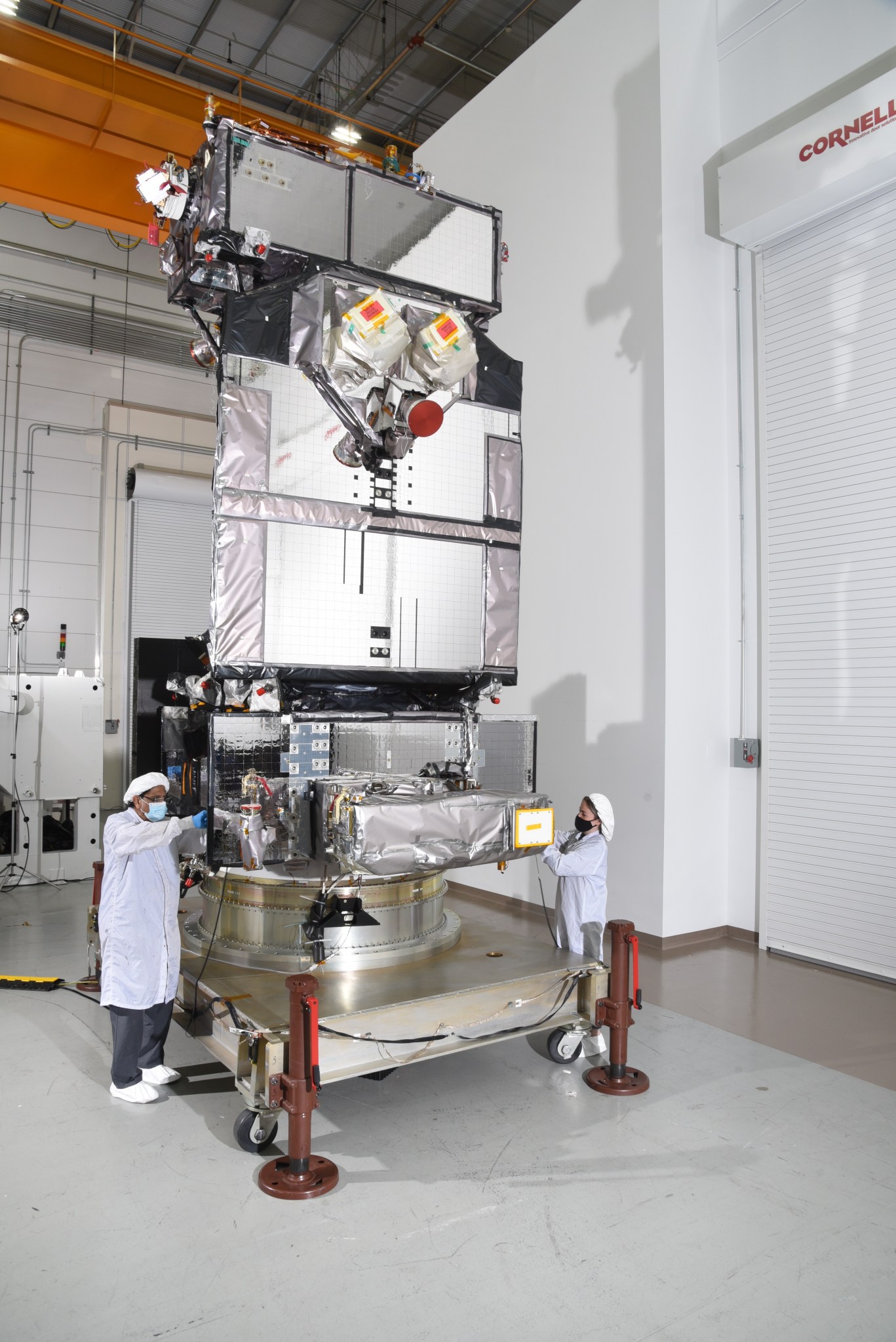
Editor’s Note: On June 4, 2021, United Launch Alliance (ULA) announced the launch of its Atlas V 551 rocket carrying the STP-3 mission for the U.S. Space Force’s Space and Missile Systems Center (SMC) has been delayed to evaluate launch vehicle readiness. LCRD is a NASA payload on the launch. ULA and SMC are working to determine the next available launch opportunity. Once a new launch target date is determined, media accreditation deadlines will be updated accordingly.
U.S. media accreditation has opened for an upcoming rocket launch with a NASA payload that aims to enhance communications capabilities for the agency’s future missions, including the potential to increase bandwidth 10 to 100 times more than radio frequency systems.
NASA’s Laser Communications Relay Demonstration (LCRD) will fly as a payload on STPSat-6, the primary spacecraft of the third Space Test Program (STP-3) mission for the Department of Defense. STP-3 is scheduled to lift off on a United Launch Alliance Atlas V 551 rocket Wednesday, June 23, from Space Launch Complex 41 at Cape Canaveral Space Force Station in Florida.
Members of the media who are U.S. citizens or permanent residents and interested in covering the launch must submit a media access application and registration form to Space Launch Delta 45 at: 45swpa@us.af.mil. Requests should be submitted no later than 5 p.m. EDT Friday, June 11. Applicants will be notified of acceptance Tuesday, June 15. NASA subject matter experts will be available for interviews the day before launch.
LCRD represents a significant step toward making operational laser, or optical, communications a reality. The payload’s microwave-oven-size optical modules will send and receive data over infrared lasers – not visible to the human eye – at 1.2 gigabits per second from geosynchronous orbit to Earth. At that rate, it’s possible to download a two-hour movie in about 20 seconds.
Engineers will beam data between LCRD and optical ground stations located in Table Mountain, California, and Haleakalā, Hawaii, once it is positioned more than 22,000 miles above Earth. Experiments will allow engineers to refine the transmission process, study different operational scenarios, and refine tracking systems. LCRD will generate essential data and information to prepare laser communications systems for operational missions, as engineers cannot replicate the same conditions with ground tests.
Later in its mission, LCRD will conduct optical communications relay services with a future terminal on the International Space Station, which is expected to launch on a commercial resupply services mission in 2022. These operations could prove the viability of using laser communications in future crewed missions to the Moon and Mars.
The LCRD mission is led by NASA’s Goddard Space Flight Center in Greenbelt, Maryland. Partners include NASA’s Jet Propulsion Laboratory in Southern California and the MIT Lincoln Laboratory. LCRD is funded through NASA’s Technology Demonstration Missions program, part of the agency’s Space Technology Mission Directorate, and the Space Communications and Navigation (SCaN) program within the agency’s Human Exploration and Operations Mission Directorate.
STP-3 is a co-manifested spacecraft launch mission managed by the U.S. Space Force’s (USSF) Space and Missile Systems Center. The STP-3 mission matures technology and reduces risk for the Department of the Air Force, USSF, and defense and civil partners. The primary spacecraft on STP-3 is STPSat-6 and the rideshare spacecraft is the Long Duration Propulsive Evolved Expendable Launch Vehicle (EELV) Secondary Payload Adapter (ESPA) -1, or LDPE-1. Northrop Grumman built both spacecraft.
To stay updated about LCRD and laser communications, visit:
-end-
Clare Skelly
Headquarters, Washington
202-358-4273
clare.a.skelly@nasa.gov
Lora Bleacher
Goddard Space Flight Center, Greenbelt, Md.
240-397-3666
Lora.V.Bleacher@nasa.gov
Heather Scott
Space Launch Delta 45
321-323-4793
Heather.Scott.10@spaceforce.mil
Julie Arnold
United Launch Alliance
321-423-4594
Media@ulalaunch.com



























